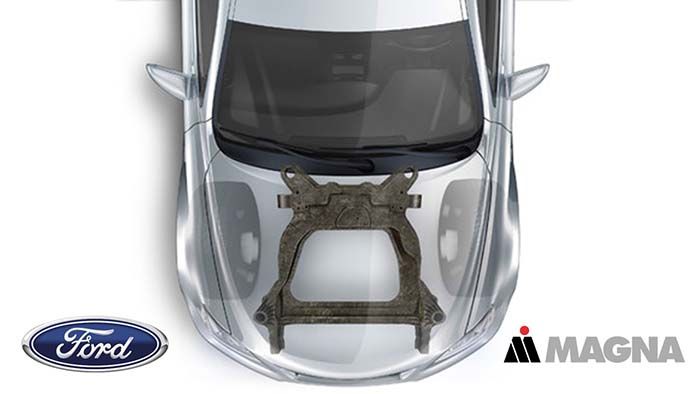High technology from Ford and Magna

16 March 2017
The companies join their efforts in creating the composite subframe
All modern technology is designed to improve performance optimization. Vehicle weight has always been a very sensitive topic, as recent years, the automobiles of almost all classes only increased its dimensions. On the "slimming" of different models employ entire departments. For this reason, Ford and Magna, gathered together their forces and experience, we built a prototype composite subframe on the basis of carbon fiber.
Subframe of the carbon fiber turned out to be 34% lighter stamped details of the steel. Companies are already considering the possibility of mass production of this design element. The main advantage of the new subframe – ease that has a direct impact on fuel efficiency.
The prototype from 45 Magna replace steel parts, which are collected in four blocks. Instead of welding the seams in the new technologies are connected by glue and rivets. Only this allows to reduce the number of parts used is up to 87%. Any engineer will confirm that such results at the same strength characteristics can be described as impressive.
Reducing the number of parts and reducing their weight opens up new opportunities for component suppliers. To the same Ford not will be the only automaker with know-how, since the use of this technology can be extended to the widest range of models of different brands.
Specific dates canadian manufacturer, not called, but very carefully predicted that the mass production of composite subframes may not be earlier than a year or two until over extensive testing. Recall that the subframe is a critical element of the chassis of the car – it is attached to the power unit and suspension components. Because of the characteristics of the subframe directly affect the car's handling.
In addition to computer simulation, both partners will have to conduct a series of tests his creation in real conditions to understand the level of exposure to composite stones, corrosion and increased load.
The final will be crash-tests - for confirmation of the effectiveness of composite materials. If the original calculations are correct, then this subframe to increase stiffness of the car when collision.
After completing seven laps of testing, the item will have to obtain approval from employees responsible for the financial component of the project. But, most likely, future benefits outweigh costs in the long term.
|
|
|
Element was not found.








